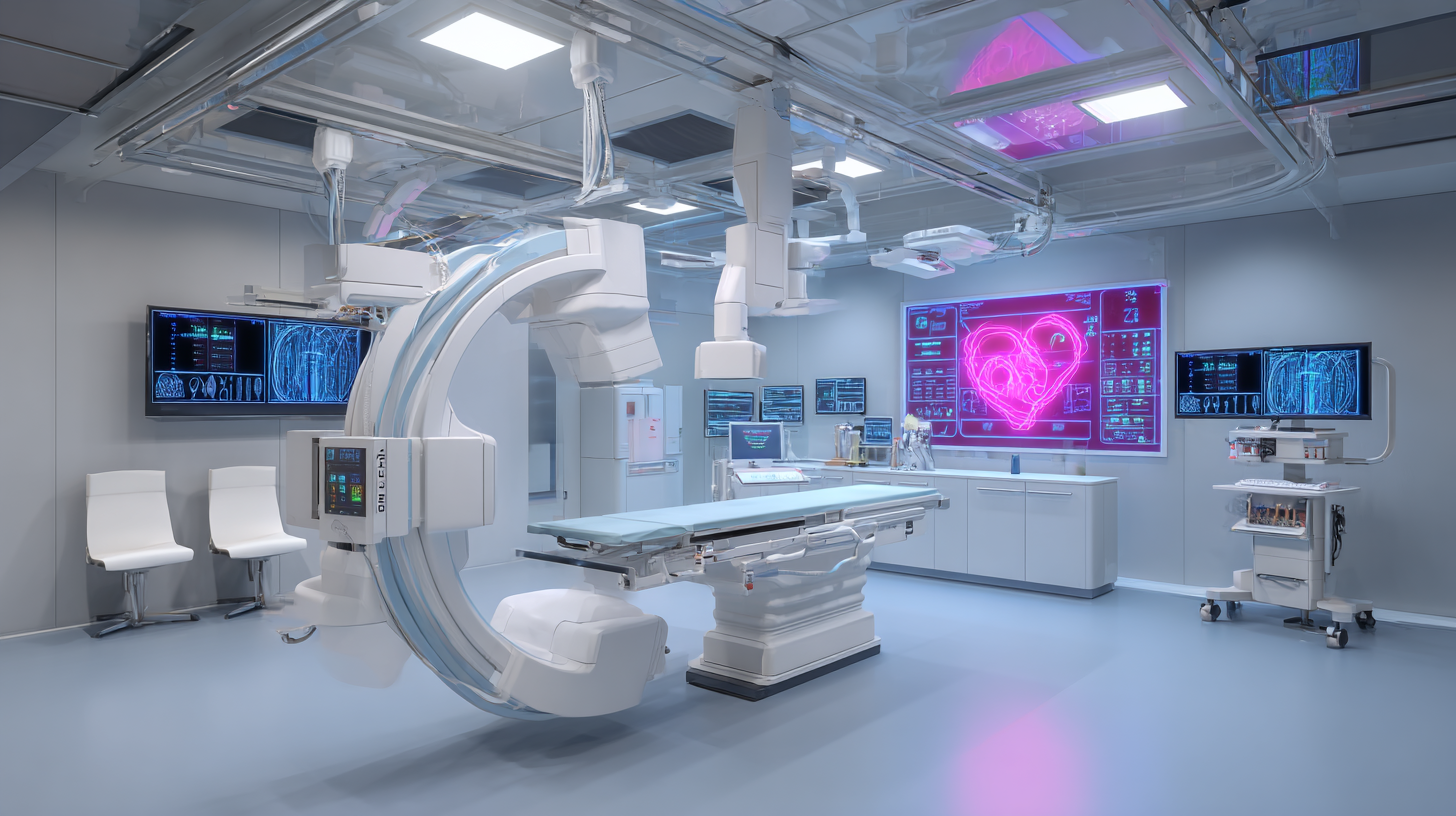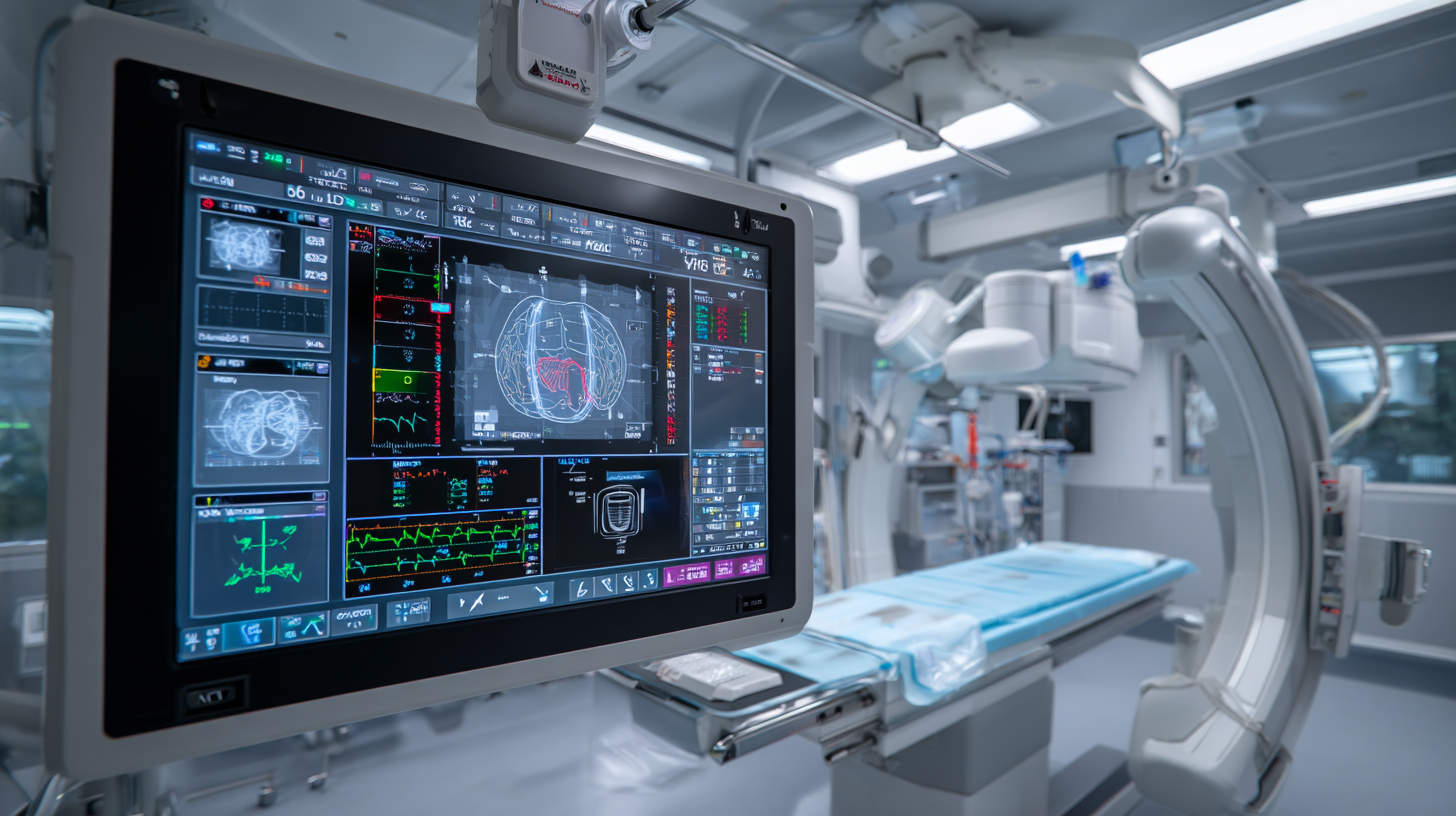Services
Ultimate Guide to Choosing the Best C Arm Intensifier for Your Needs
In the ever-evolving landscape of medical imaging, selecting the right C Arm Intensifier is crucial for enhancing the quality of procedures and ensuring optimal patient outcomes. According to a recent report by ResearchAndMarkets, the global C-arm market is projected to reach $2.5 billion by 2025, driven by advancements in technology and an increasing prevalence of chronic diseases that necessitate precise imaging solutions. A C Arm Intensifier plays a pivotal role in numerous surgical and diagnostic procedures, providing real-time imaging that enhances the accuracy of interventions. As healthcare professionals seek to improve their operational efficiency and imaging precision, understanding the different types and features of C Arm Intensifiers is essential.

This guide aims to equip you with the necessary insights to make an informed decision tailored to your specific needs, ensuring that you choose the best C Arm Intensifier for your practice.
Understanding the Basics of C Arm Intensifiers and Their Applications
C Arm intensifiers play a crucial role in modern medical imaging, particularly in the fields of orthopedic, vascular, and trauma surgery. These devices enhance the image quality during fluoroscopic procedures, allowing surgeons to visualize structures in real-time. According to a report by MarketsandMarkets, the global market for C Arm systems is expected to reach $2.9 billion by 2025, driven largely by increasing demand for minimally invasive surgeries and the rising prevalence of cardiovascular diseases. Understanding how these intensifiers work is key to optimizing their use in various medical applications.
The basic principle behind a C Arm intensifier involves the conversion of X-rays into visible light, which is then captured by a camera. This process enables high-resolution images that significantly aid in surgical precision. In a 2021 study published in the Journal of Medical Imaging, researchers found that using advanced C Arm systems reduced patient exposure to radiation by up to 30% compared to traditional imaging methods. This reduction not only protects patients but also enhances the overall efficacy of surgical procedures, making it essential for medical professionals to choose the right C Arm intensifier tailored to their specific needs and the types of procedures they perform.
Key Factors to Consider When Choosing a C Arm Intensifier
When selecting a C-arm intensifier, it's crucial to consider several key factors that ensure it meets your specific requirements. The U.S. C-arms market is projected to grow from $0.95 billion in 2023 to $1.30 billion by 2030, reflecting a compound annual growth rate (CAGR) of 4.6%. This growth underscores the increasing reliance on advanced imaging technologies in medical procedures.
One of the primary considerations is image quality. Devices that produce high-resolution images enable healthcare professionals to make more informed decisions during procedures. Recent studies have highlighted the importance of minimizing radiation dose while maintaining image clarity, which is vital for patient safety and comfort. This trend is evident in the market's shift towards C-arms that optimize both factors, enhancing the overall effectiveness of interventional X-ray procedures.
Additionally, availability and support should influence your decision. The recovery of the interventional X-ray and mobile C-arm equipment markets in 2021 indicates a robust supply chain and service infrastructure. Brands that can offer reliable customer support and maintenance services are often favored as they ensure uninterrupted operation in clinical settings. Understanding these key factors will facilitate a more informed choice when investing in a C-arm intensifier tailored to your needs.
Ultimate Guide to Choosing the Best C Arm Intensifier for Your Needs
| Feature | Importance | Recommended Specification |
|---|---|---|
| Image Quality | High | Minimum 1K x 1K resolution |
| Portability | Medium | Weight under 200 lbs |
| Ease of Use | High | User-friendly interface |
| Cost | High | $50,000 - $100,000 |
| Service & Support | High | 24/7 technical support |
| Power Consumption | Medium | Less than 1.0 kWh |
| Warranty | Medium | Minimum 2 years |
Comparing Different Types and Models of C Arm Intensifiers
When it comes to selecting the ideal C Arm intensifier, understanding the variety of types and models available is crucial. C Arm systems primarily differ in terms of image quality, versatility, and footprint. For instance, traditional C Arm models offer robust functionality, making them suitable for various surgical procedures. They provide solid image quality and a standard field of view, ideal for general use in hospitals and clinics. On the other hand, newer flat-panel detector C Arms are gaining popularity due to their superior image resolution and reduced radiation exposure, making them an excellent choice for advanced imaging needs in fields like orthopedics and vascular surgery.
Another key difference to consider is the mobility and ease of use of different C Arm models. Portable C Arms, while smaller and more maneuverable, may sacrifice some imaging capabilities compared to larger, stationary models. Therefore, clinics with space constraints but high imaging demands should weigh these options carefully. It’s also important to assess the technological features offered by each model, such as software integration, advanced imaging modes, and compatibility with existing systems in your facility. Ultimately, comparing these various factors will help you identify the best C Arm intensifier tailored to your specific medical needs.

Evaluating Price versus Performance for Your Specific Needs
When it comes to selecting a C Arm intensifier, balancing price and performance is crucial for making an informed investment. It's essential to evaluate how much you're willing to spend against the specific imaging capabilities your practice requires. Lower-priced options may seem appealing, but they often come with significant limitations in image quality, durability, or advanced features. Understanding your clinical needs enables you to prioritize essential functionalities, such as resolution, fluoroscopy rates, and overall system reliability.

Assessing your budget should go hand in hand with exploring the performance specifications of various C Arm models. High-performance units may require a more substantial upfront investment, but they often provide long-term cost savings through enhanced efficiency and reduced maintenance issues. Consider the types of procedures you will most frequently perform and the environments in which the equipment will be used. This alignment will help ensure you invest in a device that not only fits within your financial means but also maximizes your operational capabilities and improves patient care.
Tips for Maintenance and Maximizing the Lifespan of Your C Arm Intensifier
When it comes to ensuring the longevity and optimal performance of your C Arm intensifier, regular maintenance is key. According to a recent report by the American Institute of Medical and Biological Engineering, 30% of medical imaging equipment failures are due to insufficient upkeep. By following structured maintenance protocols, you can significantly enhance the lifespan of your C Arm.
One essential tip is to conduct routine checks on the calibration and performance of the intensifier. This should be performed at least bi-annually, as precise calibration ensures accurate imaging. Additionally, keep the equipment clean and free from dust and debris, as contaminants can affect performance. Adopting a preventive maintenance schedule can reduce unexpected failures by up to 50%, according to industry studies.
Another crucial aspect is to train your staff on proper usage and handling procedures. It has been found that user errors contribute to 20% of equipment malfunctions. Regular training sessions can help familiarize staff with the best practices and proper techniques, thereby mitigating risks. Investing in maintenance and training not only maximizes the lifespan of your C Arm intensifier but also enhances patient safety and care quality.
